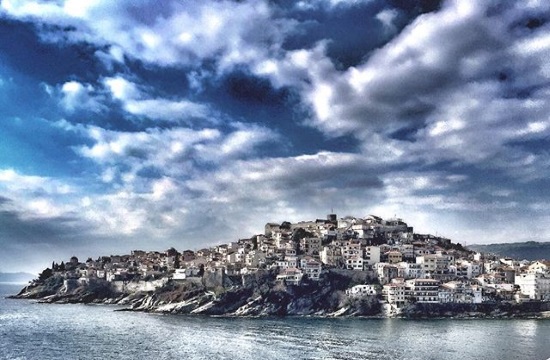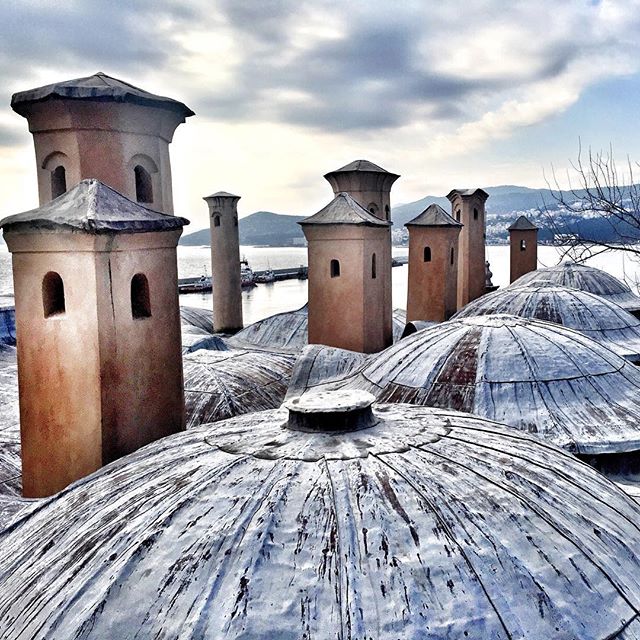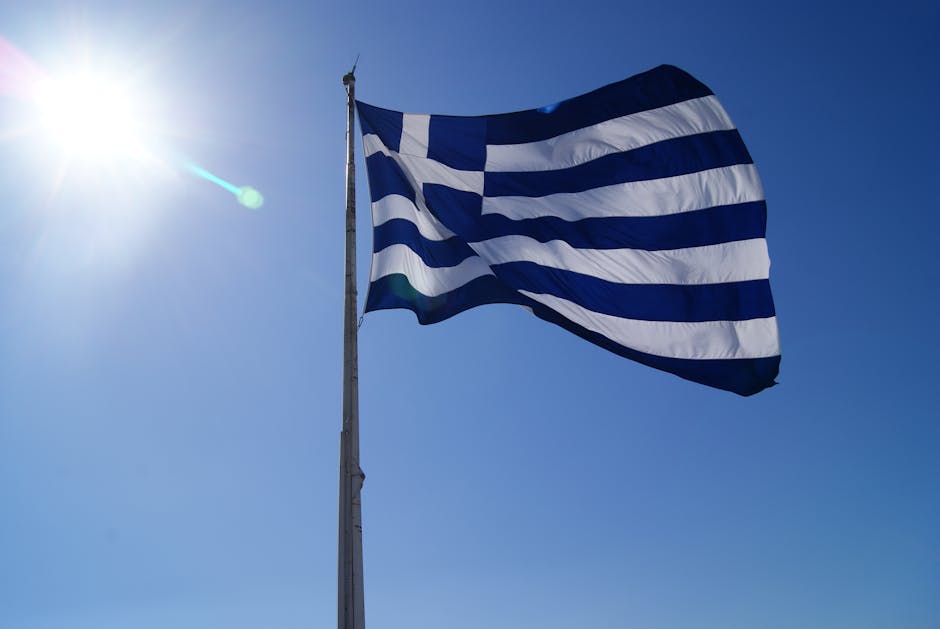Se mi chiedesso la classica domanda di quali sono i dieci luoghi top da visitare a Salonicco risponderei così:
Agios Dimitrios, misteri ancora da scoprire
Chiesa Ortodossa, Agios Dimitrios si trova al centro della città, facilmente raggiungibile a piedi, è una maestosa struttura ricostruita dopo l’incendio del 1917che distrusse quasi completamente l’intera città. E’ una delle chiese più grandi della Grecia, dedicata a S. Demetrio, è il luogo del martirio del santo e nella cripta ne vengono conservate le relique visitate da pellegrini provenienti da tutto il mondo. Ma la vera sorpresa si trova proprio nella cripta, in una parte adiacente alla chies, dove grazie ad alcuni scavi sono state riportate alla luce delle terme romaneperfettamente conservate. Si ha quasi l’assoluta certezza che anche sotto la chiesa si trovino reperti storici, ma lì non si può scavare per non mettere in pericolo la stabilità della stessa. Misteri che difficilmente verranno svelati, almeno per il momento.
Le antiche mura
Per una bellissima vista dall’alto su tutta la città uno stop imperdibile sono le mura della vecchia fortezza che si trovano nella vecchia città, sulla parte più alta della città. Dal balcone panoramico è possibile riconoscere i principali monumenti di Salonicco e perdere lo sguardo scrutando l’orizzonte sul Mar Egeo. Consiglio di fare una bella passeggiata tra le tortuose vie della città vecchia caratterizzata da basse casette con i tradizionali balconi in legno che, scampate all’incendio del 1917, conservano il fascino di un tempo.
Il museo archeologico di Salonicco
Una chicca da non perdere a Salonicco è il museo archeologico, un vero e proprio viaggio tra incredibili reperti che mi hanno letteralmente stupito. Bellissime le collane e i gioielli macedoni in oro, con lavorazioni talmente dettagliate che sembrano essere stati prodotti da mani di maestri orafi dei giorni nostri; guardandoli si resta stupidi dal fatto che sono datati 300 A.C! E che dire degli elmetti e delle corazze che sembrano provenire direttamente dal film “il gladiatore”? Ma il museo è molto altro, anche se inaspettatamente poco frequestato e davvero un must se si visita Salonicco.
La Torre Bianca
E’ uno dei simboli della città ed uno dei luoghi più fotografati di Salonicco. Si trova nel lungomare cittadino, al centro di un parco dove i locali amano distendersi al sole o passeggiare accarezzati dalla brezza serale. Interessante ed un pò macabra la storia del suo color bianco: un’antica fortezza, trasformata poi in prigione e luogo di tortura, le mura della torre erano totalmente imbrattate di sangue. Fu nel 1890 che un prigioniero condannato all’ergastolo imbiancò l’intero edificio in cambio della libertà.
La Rotonda
Come solo alcuni monumenti riescono a fare, la Rotonda di Salonicco riesce a farsi notare nel panorama cittadino, rubando l’attenzione, oltre che per la sua imponente struttura, anche per la sua bellezza architettonica. Interessante sapere che come molti edifici storici della città di Salonicco, la Rotonda con il passare dei secoli ha avuto diverse funzioni. Costruita dai romani come tempio di Zeus, l’imperatore bizantino Teodosio il Grande la trasformò nella chiesa di S. Giorgio decorandola con bellissimi mosaici. I Turchi a loro volta la fecero diventare una moschea, distruggendo parte delle opere d’arte che conteneva; ma l’importanza di ciò che è rimasto e sufficiente per renderla unica nel suo genere e partimonio dell’Unesco.
L’arco di Galerio
Un’altra istantanea della storia di Salonicco è impressa nell’arco dell’imperatore romano Galerio che la commissionò attorno al 300 per celebrare la vittoria sui Persiani. Si trova nel centro della città, a pochi passa dalla Rotonda e viene usato come punto di ritrovo per i numerosi universitari che rendono la zona viva e vibrante.
Bagni Turchi
Le varie dominazioni hanno puntellato Salonicco con lasciti davvero vari e così in pochi passi si passa dai ritrovamenti Romani a quelli Ottomani. Per me entrare nell’ Hammam, chiamato Loutrá Parádissos ( letteralmente bagni del Paradiso) è stata una grande emozione, un’inaspettata full immersion in una diversa architettura, perfettamente conservata nei secoli. Costruito nel 1444 come bagno turco privato per il sultano Murad II e il suo harem, questa struttura nei secoli ha aperto le porte al pubblico permettendo l’ingresso a tutti, ovviamente in aree separate per uomini e donne. Qui venivano i business man dell’epoca per discutere su scambi e chiudere affari; una vera e propria vita sociale girava tra le mura di questo luogo.
Il lungomare di Salonicco
Una passeggiata nel lungomare di Salonicco, accompagnati dalla dolce brezza che sempre spira dal mare è un toccasana per metabolizzare, magari al tramonto, tutto quello che questa città offre ai propri visitatori. Ottimo posto anche per fare del ‘people watching’, fantasticando ed immaginando la vita delle persone che per un attimo si incrociano con la tua, un popolo che a mio avviso ci assomiglia molto.
Il mercato locale
Il mercato di una città cela in sè l’essenza degli abitanti, passeggiare tra le bancarelle, scoprendo ed assaggiando gli ingredienti della cucina tipica, è una full immersion in colori e sapori, ed il mercato di Modiano, nel cuore di Salonicco, è piuttosto animato dal richiamo dei venditori che si sfidano a colpi di cantilene, incomprensibili, ma che mi ricordano i mercati d’Italia. Tra una bancarella e l’altra, sullo sfondo si intravedono i bar dove le persone del posto si ritrovano per assaporare il frappè (in Grecia è un bicchierone di caffè freddo con ghiaccio), o per un pranzo low-cost.
I mosaici
Alcuni mosaici come gli affreschi catapultano chi li guarda nella scena che rappresentano e più si ammirano, più emergono particolari che incantano ed affascinano. La città di Salonicco conserva alcuni dei mosaici più importanti del periodo Bizantino, i più belli si trovano nella Rotonda, nella chiesa di Agios Dimitrios o nella chiesa di S. Sofia: una delle più antiche della città e patrimonio dell’Unesco. Proprio nella chiesa di S. Sofia, costruito sulla cupola, il mosaico raffigurante Gesù ed i 12 apostoli mi ha letteralmente tenuto con il naso all’insù.
Info utili
Non c’è modo migliore per scoprire una città che esplorarla con chi lì ci vive, a maggior ragione quando si parla di una città come Salonicco che cela un passato ricco e vario. Se non avete la fortuna di conoscere qualcuno in loco, allora vi consiglio
Thessaloniki city walks: passo dopo passo vi sapranno guidare alla scoperta del passato di Thessaloniki sulle tracce del periodo Romano, Bizantino ed Ottomano. L’ultima nostra tappa è stata proprio al mercato di Modiano, quale modo migliore per concludere se non dove la tradizione, culture diverse e sapori si incontrano.
Dove dormire: la scelta è varia e non sarà difficile trovare la soluzione adatta a voi. Cercate nel web, su
www.bookingolasena.gr un sito che potete prenotare biglietti aerei, alberghi , ristoranti crociere e.t.c. Noi abbiamo soggiornato all’Astoria, un ottimo tre stelle a pochi passi dal porto e al centro della movida di Salonicco; stanze moderne e spaziose ed il prezzo sicuramente interessante, 63 euro a notte.






































